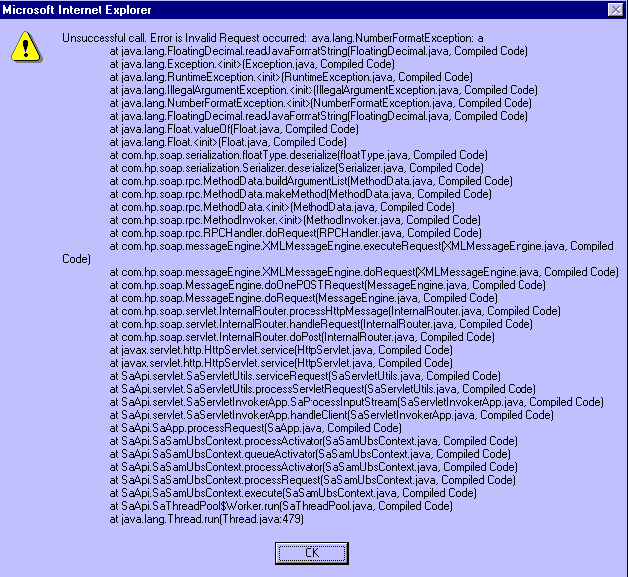December 4, 2001 - Calling the EchoFloat Web Service
 |
December 4, 2001 Calling the EchoFloat Web Service Tips: December 2001
Yehuda Shiran, Ph.D.
|
float, you may send a decimal number, an integer, a floating number, a quoted decimal, a quoted integer, or a quoted floating number. You send the input decimal number to the Web service by assigning the third parameter of the callService() method. The following calls will be successful:
iCallID = webServiceCallerBody.echo.callService(handleResult, "echoFloat", 5.6e-3);iCallID = webServiceCallerBody.echo.callService(handleResult, "echoFloat", 5.6);iCallID = webServiceCallerBody.echo.callService(handleResult, "echoFloat", 5);iCallID = webServiceCallerBody.echo.callService(handleResult, "echoFloat", "5.6e-3");iCallID = webServiceCallerBody.echo.callService(handleResult, "echoFloat", "5.6");iCallID = webServiceCallerBody.echo.callService(handleResult, "echoFloat", "5");
iCallID = webServiceCallerBody.echo.callService(handleResult, "echoFloat", abc);
iCallID = webServiceCallerBody.echo.callService(handleResult, "echoFloat", "a");

Here is an HTML file that demonstrates calling a Web service. Copy it to your local disk, together with the WebService behavior (webservice.htc):
<HTML>
<BODY ID="webServiceCallerBody" onload="loadService()"
STYLE="behavior:url(webservice.htc);background-color:peachpuff;color:brown;font-size:18">
<SCRIPT LANGUAGE="JavaScript">
<!--
function loadService() {
webServiceCallerBody.onserviceavailable = enableServiceCall; //Used for the synchronous call.
webServiceCallerBody.useService(
"https://soap.bluestone.com:80/interop/EchoService/EchoService.wsdl","echo");
}
function callAsynch() {
iCallID = webServiceCallerBody.echo.callService(
handleResult, "echoFloat", 5.6e-3);
}
function callSynch() {
var co = webServiceCallerBody.createCallOptions();
co.funcName = "echoFloat";
co.async = false;
var oResult = webServiceCallerBody.echo.callService(co, 5.6e-3);
handleResult(oResult);
}
function enableServiceCall() {
b2.disabled = false;
}
function handleResult(res) {
if (!res.error) {
alert("Successful call. Result is " + res.value);
}
else {
alert("Unsuccessful call. Error is " + res.errorDetail.string);
}
}
// -->
</SCRIPT>
<HR><H4>Calls to an echo service</H4><HR><BR><BR>
<BUTTON ID="b1" onclick="callAsynch()">Call Asynchronously</BUTTON><BR><BR>
<BUTTON ID="b2" onclick="callSynch()" disabled>Call Synchronously</BUTTON><BR><BR><BR><BR>
<A HREF="https://www.xmethods.net/ilab/">Interop Testing Site</A>
</BODY>
</HTML>

 Find a programming school near you
Find a programming school near you